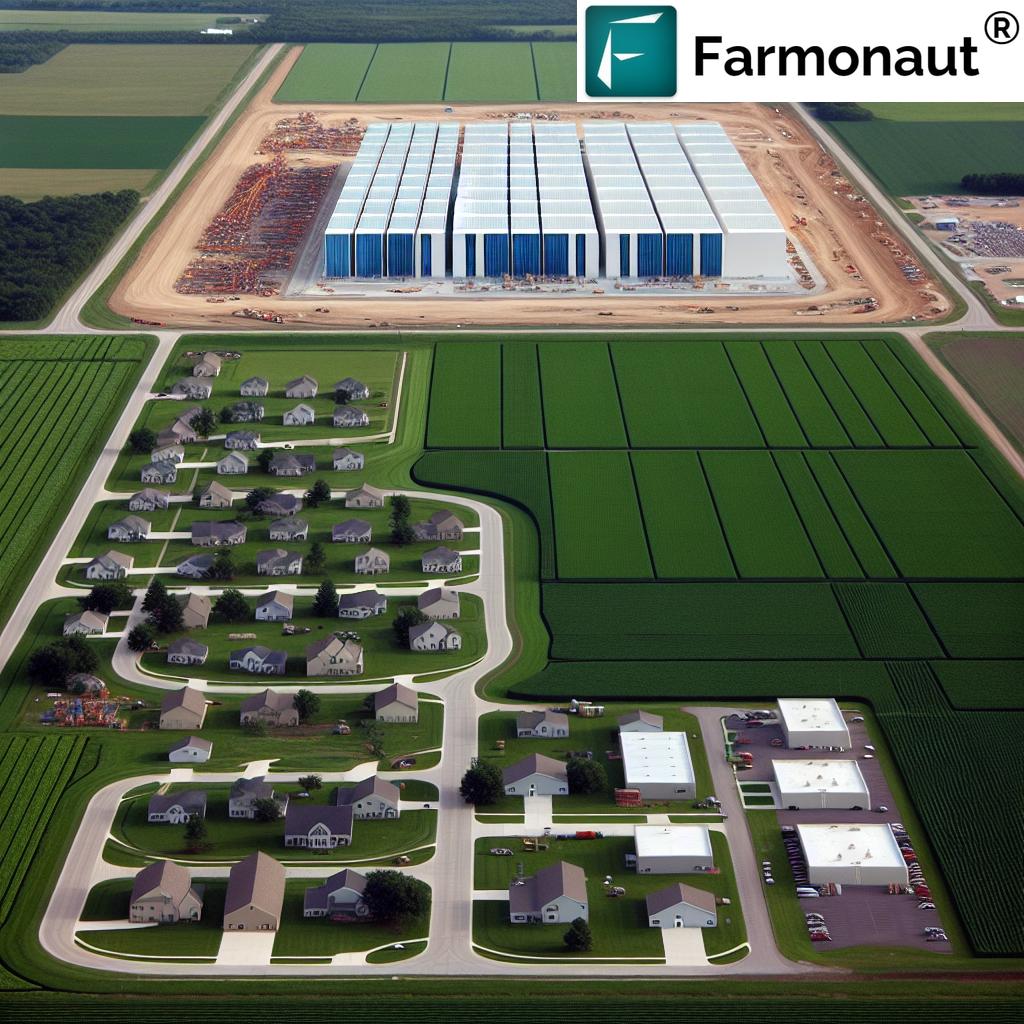Aquifer Recharge Zone: California Groundwater Recharge – The Critical Role in California’s Water Management for 2025
Summary: California’s water security remains a pressing concern in 2025 as the state continues to grapple with recurrent droughts, climate variability, and growing demands from agriculture, urban centers, and ecosystems. At the heart of a sustainable future lies the aquifer recharge zone, an essential component of California groundwater recharge that underpins our resilience, ecological health, and agricultural productivity. This blog explores the concept, challenges, management strategies, technological innovations, and the crucial role these zones play in California’s water sustainability strategy—emphasizing why they are more vital than ever in a changing climate.
“California recharges about 2 million acre-feet of groundwater annually—enough to supply over 4 million households each year.”
Understanding Aquifer Recharge Zones
Aquifer recharge zones are geographical areas where surface water naturally penetrates through the soil and rock layers, making its way downward to replenish underground aquifers. These zones are not just ecological features; they are the very pulse of groundwater recharge, supporting the lifeblood of California’s agricultural, municipal, and ecological systems.
A typical aquifer recharge zone encompasses wetlands, riverbeds, floodplains, and any permeable land areas where infiltration is optimal. Here’s why these zones are critical:
- They replenish the underground aquifers that supply nearly 40% of California’s water during normal years, and up to 60% during droughts.
- Support agricultural productivity by maintaining sufficient groundwater levels for irrigation.
- Nourish wetlands and habitats that depend on stable groundwater tables.
- Help mitigate water scarcity and build long-term resilience to droughts.
What is an Aquifer?
An aquifer is a layer of permeable rock, sediment, or soil that holds and transmits groundwater. When water from precipitation or surface runoff percolates naturally through the recharge zone, it replaces the water extracted for agriculture, drinking, and other uses.
Key characteristics of aquifer recharge zones:
- Highly permeable soils: These facilitate rapid infiltration and movement of water downward.
- Geographical diversity: Recharge zones are found in floodplains, valleys, riverbeds, wetlands, and even managed agricultural lands.
- Natural and managed processes both play important roles in recharge, especially in a state as hydrologically diverse as California.
The Role of Aquifer Recharge Zones in California Groundwater Recharge
California’s vast Central Valley is one of the most productive agricultural areas in the world, relying heavily on groundwater extracted from deep aquifers below. During times of drought or reduced surface water supplies, the state turns to its underground reservoirs for resilience.
Why are aquifer recharge zones so vital to California’s future?
- Groundwater supply security: With variable climate and prolonged droughts, recharge zones help stabilize groundwater levels and ensure long-term water access for both urban and rural communities.
- Ecosystem health: Many of California’s most precious wetlands, aquatic habitats, and spring-fed rivers are underpinned by robust groundwater tables maintained by healthy recharge zones.
- Agricultural sustainability: By enabling reliable recharge, these zones directly support the irrigation needs of California’s 40-plus billion-dollar agricultural sector.
California groundwater recharge is a cornerstone of statewide water management strategy. It involves protecting natural infiltration areas, employing managed recharge techniques, and utilizing data-driven GIS solutions for identifying the best locations for artificial recharge.
“Aquifer recharge zones can boost regional groundwater levels by up to 50% during wet years in California.”
How Recharge Happens: Natural Vs Managed Processes
Natural recharge occurs when rain or stream water slowly seeps downward through permeable soils, replenishing the aquifer. Factors such as soil type, vegetation cover, land use, and climatic variability influence the rate and success of this process.
Managed aquifer recharge (MAR), by contrast, involves strategic engineering efforts—such as infiltration ponds, spreading basins, and recharge wells—to maximize the capture and infiltration of water into aquifers, especially during periods of excess rainfall or run-off.
California Groundwater Recharge: Challenges and Paradox
California faces a clear paradox: As dependence on groundwater increases (particularly in the Central Valley and other semi-arid regions), aquifers are being depleted faster than they are naturally replenished. With the state’s population, agriculture, and industry all placing rising demands on water, aquifer recharge zones and California groundwater recharge are more essential than ever—but also under unprecedented pressure.
Major Challenges Facing Groundwater Recharge in California
- Overdraft & Subsidence: Excessive extraction has led to the lowering of groundwater tables and, in many locations, land subsidence—where the ground literally sinks, damaging infrastructure, reducing flood protection, and permanently reducing aquifer capacity.
- Quality Degradation: Intensive agriculture and urban runoff can introduce contaminants (nitrates, pesticides) to recharge zones, affecting groundwater quality.
- Urbanization and Land-Use Change: Wetlands have been drained, floodplains leveled, and permeable surfaces paved over, reducing both the extent and functionality of recharge zones.
- Climate Variability: Changes in rainfall timing and intensity, diminished snowpack, and rising evapotranspiration rates challenge traditional models of recharge.
Recurrent droughts and increasing unpredictability in precipitation patterns mean California cannot rely on historical conditions. Strategic planning, management, and innovation are now imperative for sustaining aquifer recharge zones and securing state-wide water resilience.
Impacts of Droughts, Climate Variability, and Urbanization
Climate change continues to shape California’s drought cycles, precipitation distribution, and water security. Let’s examine how these drivers affect aquifer recharge zones and groundwater recharge processes:
- Decreasing snowpack: The Sierra Nevada, long a natural water reservoir, is witnessing diminished snowpack, resulting in reduced slow-release runoff during spring and summer.
- More intense rainfall, less infiltration: Heavy rains often lead to increased runoff (and flooding), but less water actually makes its way downward through the soil into aquifers.
- Rising urban heat: Increased urbanization amplifies local drought impacts through “heat island” effects and exacerbates the expansion of impermeable surfaces.
All these trends result in the shrinking of natural recharge zones and their effectiveness—creating an urgent demand for innovative managed aquifer recharge (MAR) solutions and conservation programs.
Managed Aquifer Recharge (MAR) and Innovative Solutions
California’s MAR efforts have expanded significantly in recent years as both a water management necessity and a strategic response to the state’s drought conditions. MAR (Managed Aquifer Recharge) refers to the purposeful, often engineered augmentation of groundwater supplies by directing water into recharge zones at times and places where natural infiltration is insufficient.
Key Approaches in Managed Aquifer Recharge
- Infiltration Basins: Large, shallow ponds where stormwater or other supplies are stored temporarily, allowing for infiltration through the soil layers.
- Injection Wells: Water, often treated or filtered, is injected directly into deeper aquifer layers below the surface.
- Spreading Grounds: Flooding carefully selected agricultural or open land to enhance infiltration during high water periods.
- Flood-Managed Aquifer Recharge (Flood-MAR): Directing storm flows, particularly in wet years, onto fields or open land to speed up recharging processes.
- Managed Wetlands: Utilizing wetland areas to slow water, filter sediments, and maximize infiltration rates—benefiting both water supply and wildlife.
An effective California groundwater recharge strategy combines these MAR projects with the protection of natural aquifer recharge zones for optimal resilience.
Benefits of MAR for California
- Builds drought resilience by banking water during wet years for future use.
- Helps prevent subsidence and loss of aquifer capacity by maintaining healthy groundwater levels.
- Can improve water quality by filtering pollutants as water percolates through soils and rock.
- Supports agricultural and ecological sustainability—critical for California’s central valley and other farming regions.
Comparative Benefits Table: Groundwater Recharge Methods in California
| Recharge Method | Est. Annual Recharge Volume (acre-feet) | Environmental Benefits | Implementation Cost USD | Geographic Suitability |
|---|---|---|---|---|
| Flood-Managed Aquifer Recharge (Flood-MAR) | 500,000 – 1,500,000 | Recharges aquifers efficiently; reduces flood risk; supports habitat restoration | $$$ (Moderate to high) | Central Valley, river corridors |
| Managed Wetlands | 50,000 – 200,000 | Enhances biodiversity; improves water quality; stores water for dry periods | $$ (Moderate) | Delta, Sacramento Valley, San Joaquin |
| Direct Injection Wells | 100,000 – 400,000 | Targets deep aquifers; supports urban recharge; minimal land footprint | $$$-$$$$ (High) | Urban/suburban, deeper aquifers |
| Infiltration Basins & Spreading Grounds | 200,000 – 700,000 | Improves local water availability; filters contaminants; low-tech | $-$$ (Low to moderate) | Throughout CA; especially peri-urban, ag-lands |
*Estimated recharge volumes are highly variable, depending on precipitation and hydrologic conditions.
Policy Framework and Sustainable Management in 2025
The legal and policy landscape of groundwater management in California has undergone a revolution, with the Sustainable Groundwater Management Act (SGMA) serving as the principal driver. Enacted to halt overdraft and foster long-term groundwater sustainability, SGMA mandates a new way of thinking about recharge, supply, conservation, and water rights.
How SGMA Supports Aquifer Recharge Zones
- Groundwater Sustainability Agencies (GSAs) are formed at the local or regional level to manage and monitor basins, identify critical recharge zones, and coordinate managed recharge projects.
- Plans prioritize the protection and enhancement of natural recharge areas, often restricting construction or activities that impede infiltration.
- Incentives for conservation farming and cover cropping to boost infiltration, reduce erosion, and improve soil structure in agricultural areas.
However, challenges remain, as recharge zones often coincide with prime agricultural land or locations under development pressure, making integrated, science-based planning a requirement.
Technological Advancements and Data-Driven Water Strategies
The year 2025 marks a significant leap forward in the deployment of technology to support aquifer recharge zone, california groundwater recharge strategy:
- Satellite Data and Remote Sensing: High-resolution imagery and analysis are enabling precise mapping of recharge zones, monitoring of groundwater changes, and early detection of problem areas.
- AI and Machine Learning: Predictive models help optimize MAR placement, monitor infiltration rates, and project future water needs under climate change scenarios.
- Blockchain Traceability: Ensures water allocations and recharge projects are transparently logged, improving community trust and reducing the risk of over-allocation or fraud.
- API and Mobile App Integration: Modern platforms let managers, farmers, and agencies monitor aquifer health, schedule recharge actions, and assess water quality in real-time.
Smart strategies for groundwater recharge depend on timely and precise hydrological information. Farmonaut’s AI-powered satellite monitoring tools, for example, provide valuable, affordable insights to agricultural and water managers, ensuring smarter, more sustainable decisions.
The Importance of Accurate Infiltration Measurement
Measuring infiltration—the rate at which surface water moves downward through the soil—is crucial for determining the effectiveness of recharge efforts. Technologies such as soil moisture sensors, remote sensing indices (e.g., NDWI), and field-based monitoring networks are all critical in 2025.
For agricultural projects aiming to measure resource impact or support sustainable supply chains, Farmonaut’s Carbon Footprinting solution helps quantify and monitor carbon emissions and water resource use—supporting transparency during MAR implementation across California.
Enhancing Aquifer Recharge Zones for Future Resilience
Success in California groundwater recharge depends on integrated, long-term strategies that account for climate uncertainty, ecosystem needs, and population growth. Here are 2025’s leading priorities in strengthening aquifer recharge zones:
- Prioritize recharge zone mapping: Using satellite data, hydrologic models, and field surveys to identify high-potential sites statewide.
- Protect existing recharge zones through zoning, conservation easements, and reduced development in critical infiltration areas.
- Restore and expand wetlands and floodplains—to naturally increase regional recharge rates and buffer against drought and extreme weather.
- Promote regenerative and conservation agriculture to maintain soil permeability, improve organic matter, and reduce runoff through sustainable farming practices.
- Support multi-benefit projects that combine water banking, ecological restoration, and agricultural support.
Farmonaut: Intelligent Solutions for Sustainable Water Management
At Farmonaut, we recognize that effective groundwater management in California and across the globe hinges on data, accessibility, and cost-effective monitoring. Our satellite technology platform brings together real-time satellite imagery, artificial intelligence, and blockchain to empower farmers, land managers, agencies, and businesses.
- Satellite-Based Monitoring: We deliver up-to-date imagery and analytics for crop health, soil conditions, flood detection, and aquifer trends.
- AI Advisory & Weather Forecasts: Jeevn AI delivers field-level insights and custom recommendations to improve productivity, manage water, and support recharge zone resilience.
- Blockchain Traceability: Our traceability systems guard resource records and enhance trust for compliance, insurance, and sustainability reporting. Learn more about our Traceability Solution.
- Fleet & Resource Management: Optimize logistics for irrigation, resource allocation, and MAR project implementation with our Fleet Management Tool.
- Environmental Impact Monitoring: We help organizations track water usage, carbon impact, and environmental footprint, essential for both regulatory compliance and long-term sustainability.
Large-scale landowners and agencies can utilize our Large Scale Farm Management App to coordinate land use, track infiltration trends, and plan recharge efforts efficiently.
Our solutions serve farmers, agribusinesses, local governments, NGOs, and financial institutions seeking to monitor, conserve, and optimize groundwater resources and recharge zones—all while promoting sustainability and water security across California and beyond.
Resources, Links & Apps
Explore how you can access Farmonaut’s satellite-powered tools and APIs to enhance your groundwater recharge planning and monitoring:
-
Farmonaut Web App:
Start Here

- API Access: Developers and GIS professionals can tap into Farmonaut’s API (API Documentation) for custom monitoring and integration into sustainability projects.
-
Android App: Farmonaut on Google Play

-
iOS App: Farmonaut on App Store

Frequently Asked Questions
- What exactly is an aquifer recharge zone?
An aquifer recharge zone is a geographical area—such as a floodplain, wetland, or permeable landscape—where water from the surface naturally percolates downward to replenish underground aquifers. - Why are aquifer recharge zones especially important in California?
In California, where groundwater provides nearly 40% of the water supply (and up to 60% during droughts), protecting and enhancing recharge zones is essential for water security, agricultural productivity, and ecosystem resilience. - What is managed aquifer recharge (MAR)?
Managed aquifer recharge (MAR) involves engineered methods—such as infiltration basins, injection wells, and spreading grounds—to purposely augment the recharge of water into aquifers, supplementing natural processes. - How does climate change affect recharge zones?
Climate change leads to altered rainfall patterns, reduced snowpack, and increased evapotranspiration, making natural recharge less predictable and increasing the reliance on managed solutions. - How can satellite monitoring help?
Satellite monitoring enables real-time, region-wide tracking of land use changes, soil moisture, infiltration rates, and water body status, making it easier to map, protect, and manage recharge zones effectively. - What role does Farmonaut play in groundwater recharge management?
Farmonaut provides satellite-driven insights, AI advisory, traceability via blockchain, and resource management tools that help users enhance, monitor, and sustain aquifer recharge zones and groundwater resources efficiently.
Conclusion: Shaping California’s Water Future with Effective Aquifer Recharge Zones
In the face of pressing water security concerns in California, the significance of aquifer recharge zones and groundwater recharge cannot be overstated. As the state’s climate becomes more variable, and as droughts, population, and agriculture place greater demands on resources, proactive strategies to protect, restore, and enhance recharge zones are not merely beneficial—they are imperative.
By integrating modern technologies, intelligent management frameworks, policy innovations, and community engagement, California can secure the sustainability of its aquifers for generations. Leveraging platforms such as those provided by Farmonaut—satellite monitoring, AI-powered advisory, blockchain traceability—ensures that agencies, farmers, and stakeholders are equipped to make informed, sustainable choices.
Aquifer recharge zones are the linchpin of water resilience, agricultural prosperity, and ecosystem health in California. By prioritizing, protecting, and innovating around these critical zones, we create a more sustainable, climate-resilient, and prosperous future for California—and for the world.










